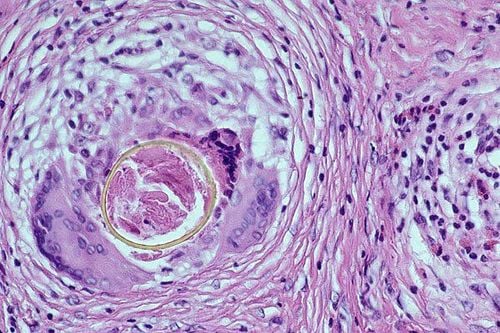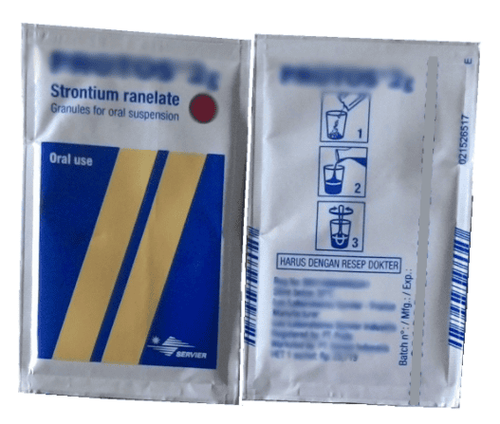This is an automatically translated article.
Ewing's sarcoma is a rare type of cancer that usually affects bones and soft tissues. According to the American Cancer Society, the 5-year survival rate for focal Ewing sarcoma is 70%. Patients with metastatic disease have a five-year survival rate of 15 percent to 30 percent. Therefore, early detection is a key factor in the treatment of Ewing's sarcoma.
1. What is Ewing's sarcoma?
Ewing's sarcoma is a rare cancer that usually occurs in children and young adults. Areas of the body affected by Ewing's sarcoma can include the bones of the legs, arms, feet, hands, chest, pelvis, spine, or skull. When Ewing's sarcoma affects soft tissues, it usually damages the trunk, arms, legs, head, neck, abdominal cavity and some other parts of the body. When compared to other cancers, bone malignancies like Ewing's sarcoma are rare. Of the rare bone tumors, Ewing's sarcoma is the second most common in children and young adults. According to data on children under 15 years old, about 1.7 children in 1 million have the disease.
The exact cause of Ewing's sarcoma is currently unknown.
Most cancers are known to arise from a certain type of tissue or organ. For example, breast cancer arises from breast cells. However, in the case of Ewing's sarcoma, doctors don't know exactly which cell type is where the cancer begins. We already know that cancer forms when changes occur in a cell's chromosomes. In Ewing's sarcoma, the genetic material on chromosomes 11 and 22 does not match. This genetic abnormality is not inherited from the parents but these chromosomal changes occur after the child is born. Doctors have not identified any risk factors that make children more susceptible to Ewing's sarcoma. A common symptom of Ewing's sarcoma is pain and possibly swelling at the site of the tumor. However, the tumor can persist for many months before becoming large enough to cause pain and swelling. In some cases, the first symptom of Ewing's sarcoma is the presence of an abnormal mass. Therefore, parents need to pay attention to abnormalities in the child's body to promptly detect the disease.
2. How is the staging of Ewing's sarcoma done?
Staging of Ewing's sarcoma is done to find out how far the cancer has spread in the body. Your doctor will order some tests to find out the stage of the cancer. Types of tests may include:
General physical exam Blood tests Imaging diagnostics: X-ray, CAT scan (CT scan), Positron emission tomography (PET scan), magnetic resonance imaging (MRI) Procedures include bone marrow aspiration and biopsy. A biopsy is the removal of cancer cells or part of a tumor to see what type of tumor it is and what stage it is in. Ewing sarcoma tumors are sometimes referred to as blue small cell (round cell) tumors because of their appearance under the microscope. Ewing sarcoma spreads to other parts of the body through tissue and lymph and blood system. Cancer stage determines how far the tumor has spread and is an important factor for doctors to choose the right treatment.
3. Surgical Procedures Used to Treat Ewing's Sarcoma
Treatment of Ewing's sarcoma usually begins with surgery to remove the cancer, followed by chemotherapy or radiation therapy. The goal of surgery is to remove all of the cancer cells. However, surgical planning must also consider how it will affect the patient's ability to walk and daily life. Surgery for Ewing's sarcoma may involve removing a small portion of bone or removing an entire limb. The procedure used will depend on many factors, including the size and location of the tumor. The surgeon will determine the type of surgery depending on the patient's condition and needs. Types of surgery include:
Amputation: Removal of a limb. Salvage therapy for localized Ewing's sarcoma: the tumor and some surrounding healthy tissue are removed using an incision. Surgery for metastatic or recurrent Ewing sarcoma: If Ewing sarcoma metastasizes or recurs, it usually metastasizes to the lungs. In this case, the patient may need to have the affected areas of the lung removed. Reconstructive surgery: Skin grafts and prosthetic implants may be needed after surgery. Rotating arthroplasty: This is a procedure used for patients with cancer of the femur or tibia leading to amputation. The part of the leg and femur that contains the tumor will be removed. The doctor will then perform an osteotomy by rotating the lower part of the leg (including the foot and ankle) 180 degrees backward to create a new “knee joint” and attach it to the thigh. The doctor will then perform a leg transplant and prosthetic foot. In the case of a tumor in the chest, a thoracotomy may be needed if the sarcoma has spread to the lungs. Some ribs may need to be removed and replaced with prosthetic material. If the tumor is in the pelvis, the pelvis may need to be reconstructed.
4. What are the risks associated with Ewing sarcoma surgery?
Like other types of surgery, surgery for Ewing's sarcoma has risks and side effects. These may include:
Reactions to anesthetics. Possible reactions include wheezing, rash, swelling and low blood pressure Bleeding Infections Blood clots Wound problems such as scarring, slow healing Wounds loose or broken bone grafts. More surgery is needed in the future especially in growing children to replace prostheses.
5. Recovery after surgery for Ewing's sarcoma
Your doctor will instruct you on the post-operative care plan and the medications you need to take such as blood thinners, anti-constipation, infections, pain relievers. Your doctor will also advise you on limited activities, physical therapy plans, and other important information before you leave the hospital. The extent of recovery will depend on the type and extent of surgery. Rehabilitation is an important part of the treatment plan for Ewing's sarcoma.
Currently, major advances in the treatment of Ewing's sarcoma have improved the outlook for patients. After completing the course of treatment, lifelong monitoring is recommended to prevent possible late effects of intense chemotherapy and radiation therapy.
Please dial HOTLINE for more information or register for an appointment HERE. Download MyVinmec app to make appointments faster and to manage your bookings easily.













